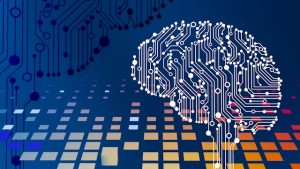Uber AI Powering Next-Generation Smart Mobility
Uber AI Powering Next-Generation Smart Mobility
Uber AI is advancing transport technology with intelligent systems that optimize routes, improve efficiency, and enhance rider experiences. It applies data-driven insights to predict demand patterns and refine trip planning. These solutions help reduce wait times, lower costs, and create smoother rides across global markets that rely on real-time transportation networks.
Uber AI driving smarter trip predictions
 Uber AI improves trip predictions by analyzing vast amounts of location and demand data. Machine learning models refine estimates for arrival times and fares. This precision helps riders plan journeys better while supporting drivers in optimizing their schedules. Accurate forecasting strengthens service performance and builds stronger connections between users and platforms.
Uber AI improves trip predictions by analyzing vast amounts of location and demand data. Machine learning models refine estimates for arrival times and fares. This precision helps riders plan journeys better while supporting drivers in optimizing their schedules. Accurate forecasting strengthens service performance and builds stronger connections between users and platforms.
Machine learning models guiding service optimization
Machine learning powers Uber AI by enabling continuous performance enhancements. Algorithms detect patterns in travel behaviors and adjust operations dynamically. These systems recommend optimal driving routes and match riders efficiently with available drivers. Through advanced learning techniques, service quality improves consistently across regions, ensuring reliable and seamless transport experiences.
Data analytics improving operational efficiency levels
Data analytics plays a central part in Uber AI by processing complex mobility patterns. Insights gained from these analyses enhance operational decisions for route mapping, traffic avoidance, and resource allocation. Such methods ensure that trips run faster, costs remain manageable, and users enjoy more dependable travel experiences across various locations.
Computer vision enhancing safety measures worldwide
Computer vision technology embedded in Uber AI assists in monitoring road conditions and identifying hazards. Cameras and sensors provide real-time visual data to improve navigation safety. These systems detect obstacles, track vehicle surroundings, and minimize accident risks. Enhanced visual capabilities ensure safer rides and reinforce confidence among passengers and drivers.
Natural language interfaces shaping better interactions
Natural language processing within Uber AI enables voice-based commands and intuitive communication. Drivers and riders engage with the system effortlessly through spoken instructions. This capability reduces friction during booking, updates, and customer support processes. Improved accessibility leads to smoother user journeys and faster resolution of service-related needs across markets.
Autonomous systems advancing future ride experiences
Autonomous systems represent one of the most advanced applications of Uber AI. These self-driving technologies leverage sensors, vision algorithms, and predictive models to navigate roads. As development continues, autonomous solutions promise faster trips, reduced operational costs, and increased accessibility for users. Testing phases showcase promising performance levels in diverse conditions.
Dynamic pricing powered by intelligent algorithms
Dynamic pricing mechanisms in Uber AI adjust fares in real time according to demand and supply. Algorithms evaluate factors such as traffic, peak periods, and regional variations. These adjustments help maintain service availability while balancing rider affordability and driver incentives. Flexible pricing models contribute to an efficient and responsive platform.
Cloud integration supporting scalable deployments
Cloud frameworks enhance Uber AI by enabling scalable model training and faster system updates. High-performance infrastructure manages large-scale computations and data flows efficiently. This setup ensures that AI-powered tools remain agile across global operations. The seamless integration of cloud resources strengthens performance consistency and supports continuous technological advancement.
Future trajectory of AI-driven mobility
Uber AI continues to expand through innovations in automation, predictive modeling, and multimodal transport solutions. New advancements will further improve travel times, fuel efficiency, and environmental sustainability. Companies in mobility services look toward integrated ecosystems where AI-driven platforms lead growth, efficiency, and smarter transportation networks across diverse markets and cities.
Advancing urban mobility through AI innovation
Uber AI is shaping a smarter transportation future through machine learning, computer vision, and natural language processing. Its data-driven solutions improve accuracy, safety, and customer satisfaction while reducing inefficiencies. With ongoing innovation, the platform will keep redefining mobility and enhancing urban transport systems for a rapidly evolving digital economy.